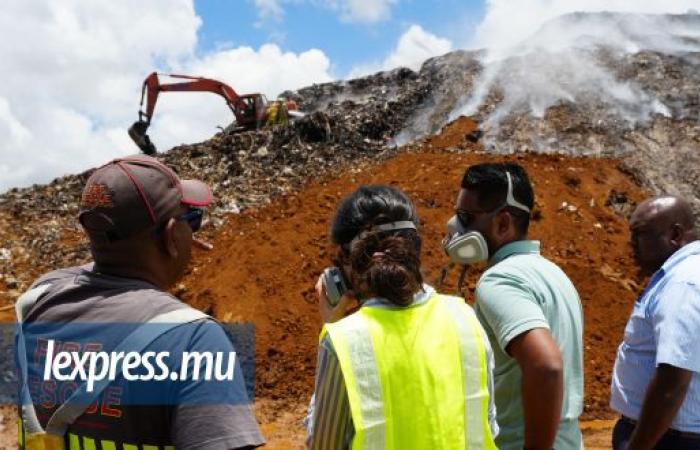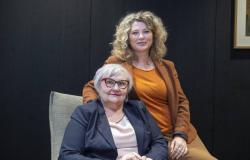It is as a representative of the Sustainable Development Commission of the Mauritian Militant Movement (MMM) that Joanna Bérenger visited Mare-Chicose on Wednesday, accompanied by other members of the body. The observation is overwhelming.
The fire, which broke out on November 6, is still burning. “According to the firefighters, with current means, it will take eight weeks to overcome it. We have a real problem, because the previous government did nothing”she castigates. As of Tuesday, the fire extended over 43,400 m², or 10% of the landfill area. Currently, they manage to extinguish 600 m² per day. After the meeting with the contractor, firefighters and representatives of the Ministry of the Environment, several problems were identified.
“We have been working on this file for a long time; This is why we wanted to make a first-hand observation. We needed to understand how the problem of leachate and empty spaces created by vertical expansion are linked to recurring fires. We also needed to understand how the situation is managed and why it is taking so long.she explains. Recurring fires find their origin in waste management itself. Joanna Bérenger recalls that a first fire broke out in Mare-Chicose in October.
There were also fires at the Roche-Bois and La Chaumière transfer stations. “In these stations, the situation is different. There have been fires because waste is piling up when this should not be the case.she specifies. The cause of these fires is that the waste is not compacted. There is therefore methane which is released and it is this gas which is at the origin of the flames.
The problem of vertical extension
For the moment, three methods are used by firefighters. The first is to try to smother the fire with earth. However, with the vertical extension, where it burns, the waste is at a height of 250 meters. “At the moment, the earth is only thrown from the bottom, but the firefighters explained that it would be much more effective if this exercise was done from a certain height. So they are building a platform. It will take two to three days.explains Joanna Bérenger.
The other method is the use of water. Again, the effectiveness is limited. Water is mainly used to cool machines. There are also sprinklers installed. “Moreover, the firefighters’ jets do not reach the height of 250 meters of waste,” she said. The firefighters, she adds, have never had the means or the equipment necessary to fight this type of disaster. A trench was then created to limit the spread of the fire.
With this fire, the site is unusable. An emergency zone was therefore created at the entrance to Mare-Chicose for the waste that arrives, but it is piled up on the ground, without protection. “When I asked why there was no lining, I was made to understand that it was going to take too long. This is not true. The real reason is that the previous government wanted to lower costs at all costs.”
The solutions
One of the solutions envisaged is the drilling of holes 20 meters deep so that the water penetrates the mountain of waste, because this is where the fire spreads. To avoid these problems in the future, we must rethink the entire organization of Mare-Chicose. In the process, she recalls that Sotravic’s contract ended in 2018 and that it has been renewed several times since, but without investment in the appropriate machines. “The previous government simply awarded contracts without thinking about solutions.” For example, you need a machine to compact waste. Methane escapes due to uncompacted waste.
The other solution, simpler and which already appeared in the 2019 Environment masterplan, is sorting waste at source. The majority of waste that comes to Mare-Chicose is organic and can be used for composting. “According to this plan, this was to be a short-term solution, implemented in one to two years.” But once again, the file did not move forward and it was not until August of this year that the contract was awarded. The MP also affirms that the site must be equipped with thermal cameras. Currently, there is only one manual camera, which requires walking around the site to detect potentially flammable areas. With modern thermal cameras, detection would be automatic. Furthermore, Joanna Bérenger also asks that air quality analyzes be made public in order to confirm that there are no toxic gases.






